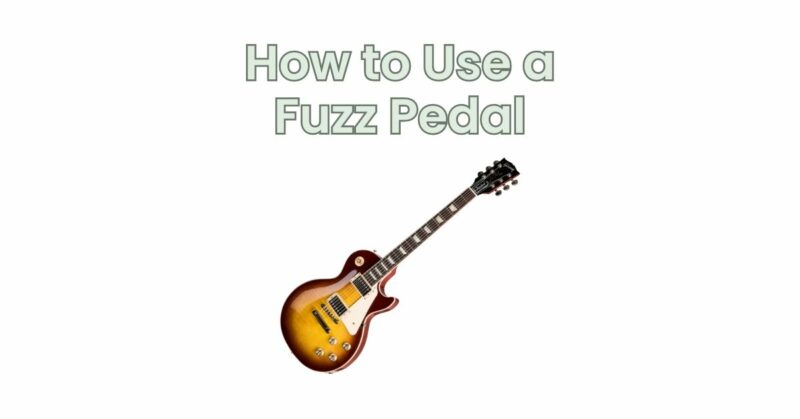Fuzz pedals are iconic guitar effects known for their distinctive, saturated, and gritty tones. However, getting the most out of a fuzz pedal requires an understanding of its unique characteristics and proper utilization. In this article, we will provide a comprehensive guide on how to use a fuzz pedal effectively, covering everything from pedal placement and settings to techniques and creative applications. Whether you’re a beginner exploring fuzz for the first time or a seasoned player looking to refine your fuzz tone, this guide will help you unlock the full potential of your fuzz pedal.
Step 1: Understanding Fuzz Pedal Basics
- What is Fuzz?: Fuzz is a type of distortion effect that generates extreme clipping and compression, resulting in a fuzzy and saturated tone. It adds harmonic richness and sustain to your guitar sound.
- Fuzz Pedal Types: Fuzz pedals come in various forms, such as germanium, silicon, or hybrid fuzz circuits. Each type offers unique tonal characteristics and response.
Step 2: Pedal Placement
- Signal Chain: Experiment with placing the fuzz pedal at different points in your signal chain to achieve different tonal results. Placing it before or after other effects can yield varying textures and interactions.
- Preamp vs. Postamp: Placing the fuzz pedal before the preamp section of your amplifier results in more gain and saturation, while placing it after the preamp delivers a smoother and more refined tone. Explore both options to find your preferred sound.
Step 3: Fuzz Pedal Settings
- Gain/Fuzz Control: Adjust the gain or fuzz control to control the amount of distortion and saturation. Lower settings produce cleaner tones, while higher settings generate more aggressive fuzz.
- Tone Control: The tone control shapes the overall tonal character of the fuzz. Experiment with different settings to find the right balance of brightness and darkness that suits your playing style and musical context.
- Volume Control: The volume control adjusts the output level of the fuzz pedal. Use it to match the fuzz level with the rest of your signal chain or to provide a volume boost for solos.
Step 4: Playing Techniques
- Pick Attack and Dynamics: Varying your pick attack and playing dynamics can affect the response of the fuzz pedal. Experiment with different picking styles, palm muting, and touch sensitivity to achieve different textures and expressiveness.
- Sustain and Feedback: Fuzz pedals excel at sustaining notes and controlled feedback. Explore holding sustained notes or chords to let the fuzz bloom and experiment with manipulating the guitar’s proximity to the amplifier for controlled feedback.
Step 5: Experimentation and Creative Applications
- Stacking Effects: Try combining the fuzz pedal with other effects like overdrive, distortion, modulation, or delay to create unique textures and tonal variations. Experiment with different pedal combinations to find your desired sound.
- Genres and Styles: Fuzz pedals are versatile and can be used in various genres, including rock, blues, psychedelia, and more. Explore different musical styles to find the sonic possibilities that resonate with your musical preferences.
- Studio Recording: Fuzz pedals can be powerful tools in the studio. Experiment with mic placement, different amplifiers, and studio techniques to capture the best fuzz tone for your recordings.
Conclusion:
Using a fuzz pedal effectively requires a combination of understanding its basic principles, exploring pedal placement and settings, employing different playing techniques, and embracing experimentation. By following this comprehensive guide, you can unlock the full potential of your fuzz pedal and discover a world of gritty and saturated tones. Remember, there are no rules when it comes to fuzz. Trust your ears, explore different settings and combinations, and allow your creativity to guide you. With time, practice, and an open mind, you’ll develop a deep understanding of your fuzz pedal and harness its unique capabilities to enhance your playing and musical expression.


